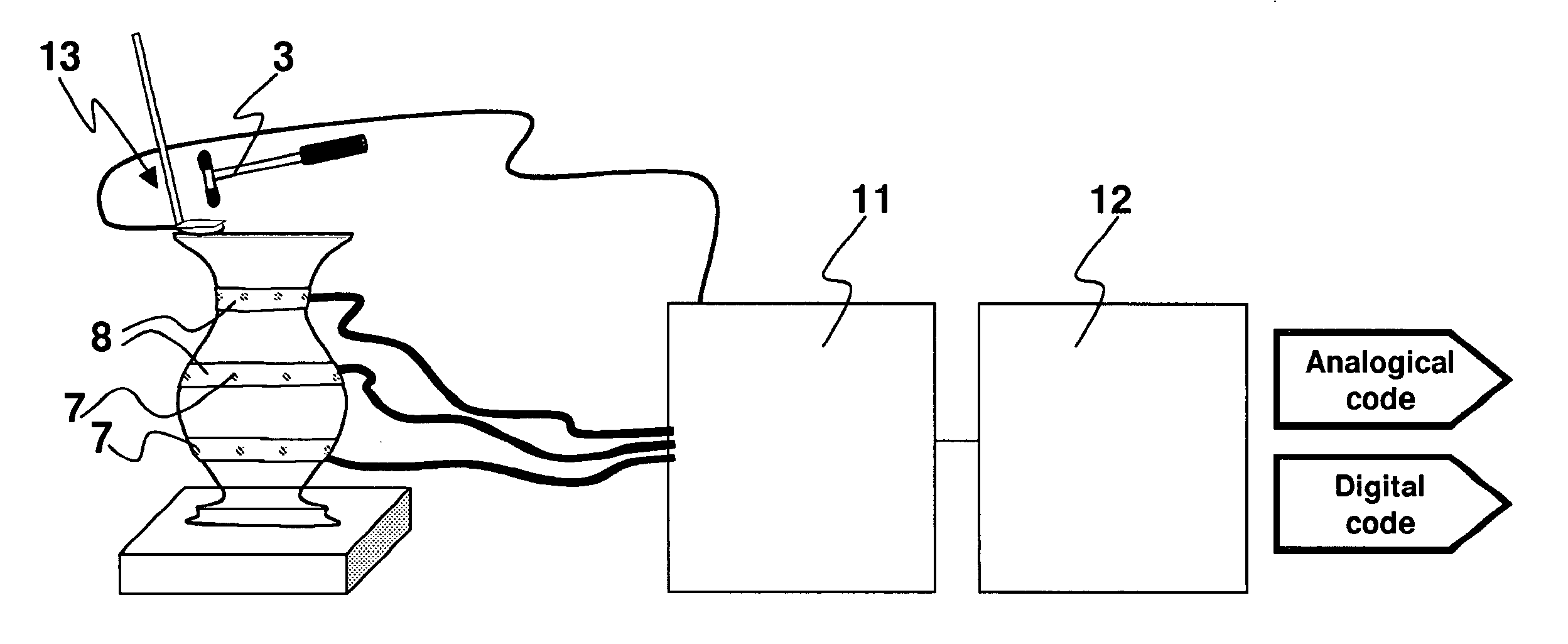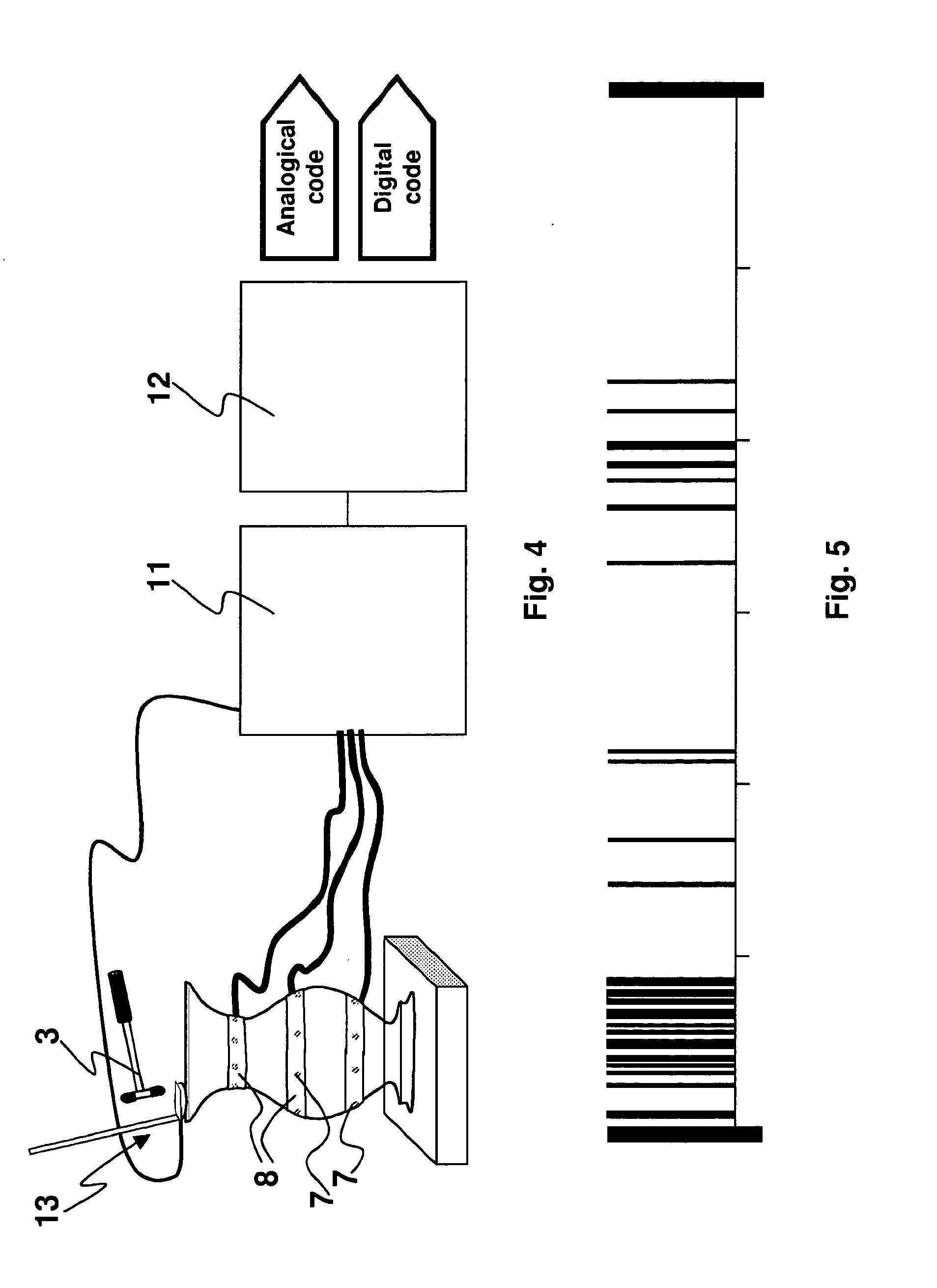Method for detecting a sonic imprint of a three-dimensional object & related apparatus
a three-dimensional object and imprint technology, applied in the direction of analyzing solids using sonic/ultrasonic/infrasonic waves, processing detected response signals, etc., can solve the problems of inability to obtain a reliable and univocal identification of artifacts, their generally high cost, and their general high invasivity
- Summary
- Abstract
- Description
- Claims
- Application Information
AI Technical Summary
Benefits of technology
Problems solved by technology
Method used
Image
Examples
Embodiment Construction
[0046]The method of the present invention allows the identification of some physical characteristics of objects made of different types of material—namely natural or artificial lapideous, metallic, glass, crystal, wood, corneous, etc.—by means of the detection technique of the free or forced vibrations, following a mechanical strain or during the application of a driving force, and the successive analysis of the vibration frequencies in order to recognize the resonance frequencies. In such a way the object can be identified in univocal and certain way, monitoring the possible time decay of the mechanical characteristics as well as its integrity.
[0047]The vibrational movements of an object depend on the geometrical shape of the object, on its physical composition, on the elasticity modules and its internal defects, which are unique for each piece to analyze, especially if it is handmade. The analysis of resonances allows to obtain, by means of the method of the invention, a vibration...
PUM
| Property | Measurement | Unit |
|---|---|---|
| frequencies | aaaaa | aaaaa |
| resonance frequencies | aaaaa | aaaaa |
| volume | aaaaa | aaaaa |
Abstract
Description
Claims
Application Information
 Login to View More
Login to View More - R&D
- Intellectual Property
- Life Sciences
- Materials
- Tech Scout
- Unparalleled Data Quality
- Higher Quality Content
- 60% Fewer Hallucinations
Browse by: Latest US Patents, China's latest patents, Technical Efficacy Thesaurus, Application Domain, Technology Topic, Popular Technical Reports.
© 2025 PatSnap. All rights reserved.Legal|Privacy policy|Modern Slavery Act Transparency Statement|Sitemap|About US| Contact US: help@patsnap.com



